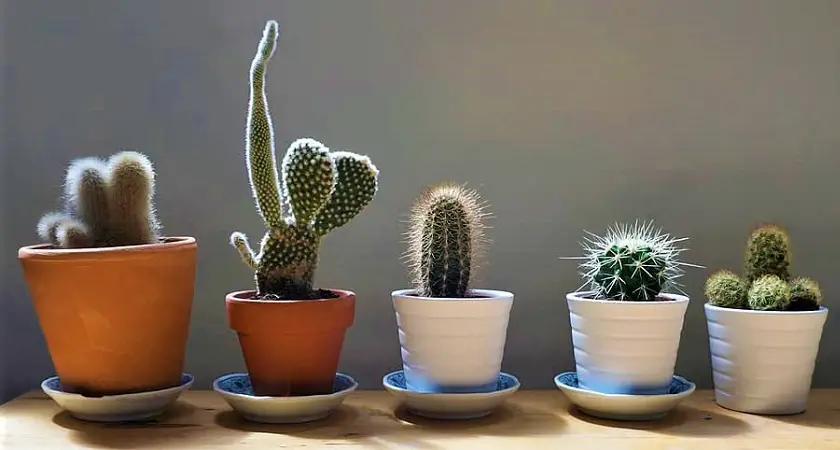
Cacti are celebrated for their unique beauty and resilience, making them a popular choice for home decor. Despite their reputation for thriving in arid conditions, proper care is crucial to keep them healthy and vibrant. Here’s a comprehensive guide to ensuring your potted cactus remains hydrated and healthy.
1. Irrigation

Watering Needs:
- Frequency: Cacti do need water, but their requirements are minimal compared to other plants. Check the soil weekly. If the top 5 centimeters are dry, it’s time to water.
- Method: Water thoroughly, ensuring the water reaches the roots. Allow excess water to drain out of the pot. Avoid letting the cactus sit in standing water to prevent root rot.
- Overwatering: Cacti are prone to root rot if overwatered. Let the soil dry out completely between waterings.
2. The Soil

Soil Composition:
- Drainage: Cacti need well-draining soil. Regular potting soil retains moisture, which can be detrimental to cacti.
- Recommended Mixes:
- DIY Mix: Combine one part sand, one part soil, and one part gravel.
- Alternative Mix: Five parts potting soil, two parts pumice, and one part coconut fiber.
Preparation:
- Ensure the pot has drainage holes to facilitate excess water escape.
3. Light

Sunlight Needs:
- Location: Place your cactus in the sunniest spot in your home or garden. Cacti thrive with direct sunlight.
- Protection: Be cautious of too much direct sunlight, which can cause sunburn. If the cactus develops yellow or brown patches, it may be getting too much sun.
- Glass Windows: Sunlight through glass can be intensified. Use sheer curtains or relocate the cactus if it shows signs of sunburn.
4. Fertilizer
Type and Application:
- Fertilizer Choice: Use a low-nitrogen, high-phosphorus fertilizer. Cacti have minimal nutrient needs compared to other plants.
- Frequency: Fertilize two to three times a year during the growing season.
- Mixing Ratio: Generally, mix one tablespoon of fertilizer with 3.5 liters of water. Always follow the specific instructions on the fertilizer package.
5. Pests
Common Pests and Prevention:
- Pests: Cacti can be affected by pests such as red spiders, fungus gnats, and mealybugs.
- Prevention: Maintain proper watering, drainage, and lighting to reduce pest risks. Remove any dead leaves or debris, as these can attract pests.
- Signs of Infestation: Poor growth or visible pests on the cactus may indicate an infestation. Treat affected plants with appropriate pest control methods.
Additional Tips
- Humidity: While cacti prefer dry conditions, a small amount of humidity is beneficial. Misting occasionally can help if your indoor environment is very dry.
- Repotting: As your cactus grows, repot it into a slightly larger container with fresh soil. This provides more space for growth and improves drainage.
By following these guidelines, you can ensure your cactus remains healthy, hydrated, and a striking addition to your home. Enjoy the unique charm and low-maintenance beauty of your potted cactus!
Show Comments



